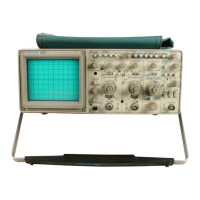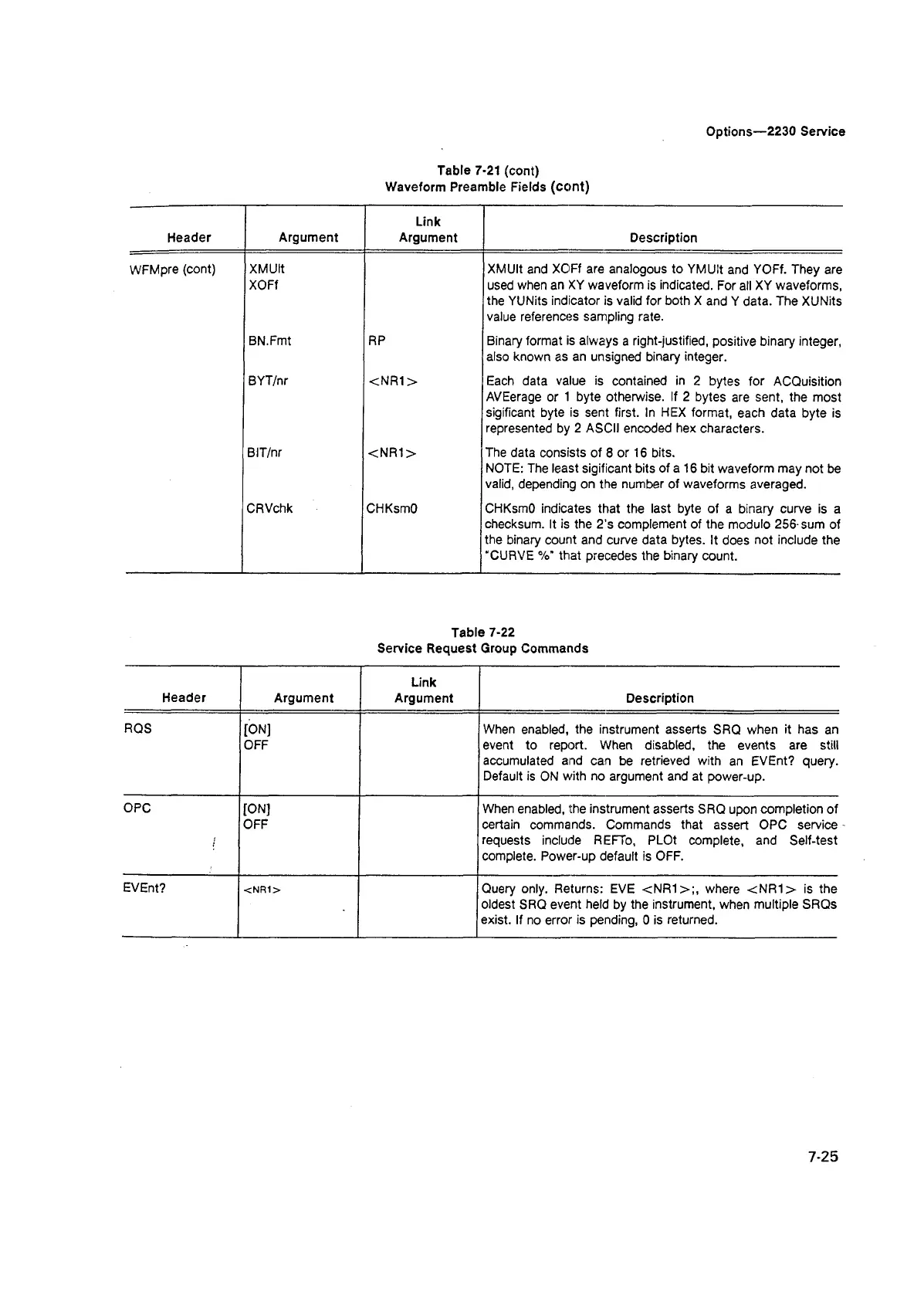Options—2230 Service
Table 7-21 (cont)
Waveform Preamble Fields (cont)
Header Argument
Link
Argument Description
WFMpre (cont)
XMUIt
XOFf
XMUIt and XOFf are analogous to YMUIt and YOFf. They are
used when an XY waveform is indicated. For all XY waveforms,
the YUNits indicator is valid for both X and Y data. The XUNits
value references sampling rate.
BN.Fmt
RP
Binary format is always a right-justified, positive binary integer,
also known as an unsigned binary integer.
BVT/nr <NR1 >
Each data value is contained in 2 bytes for ACQuisition
AVEerage or 1 byte otherwise. If 2 bytes are sent, the most
sigificant byte is sent first. In HEX format, each data byte is
represented by 2 ASCII encoded hex characters.
BIT/nr
<NR1> The data consists of 8 or 16 bits.
NOTE: The least sigificant bits of a 16 bit waveform may not be
valid, depending on the number of waveforms averaged.
CRVchk
CHKsmO
CHKsmO indicates that the last byte of a binary curve is a
checksum. It is the 2’s complement of the modulo 256-sum of
the binary count and curve data bytes. It does not include the
'CURVE %" that precedes the binary count.
Table 7-22
Service Request Group Commands
Header
Argument
Link
Argument Description
RQS
[ON]
OFF
When enabled, the instrument asserts SRQ when it has an
event to report. When disabled, the events are still
accumulated and can be retrieved with an EVEnt? query.
Default is ON with no argument and at power-up.
OPC
[ON]
OFF
When enabled, the instrument asserts SRQ upon completion of
certain commands. Commands that assert OPC service
requests include REFTo, PLOt complete, and Self-test
complete. Power-up default is OFF.
EVEnt?
< N R 1 >
Query only. Returns: EVE <NR1>;, where <NR1> is the
oldest SRQ event held by the instrument, when multiple SRQs
exist. If no error is pending, 0 is returned.
7-25

